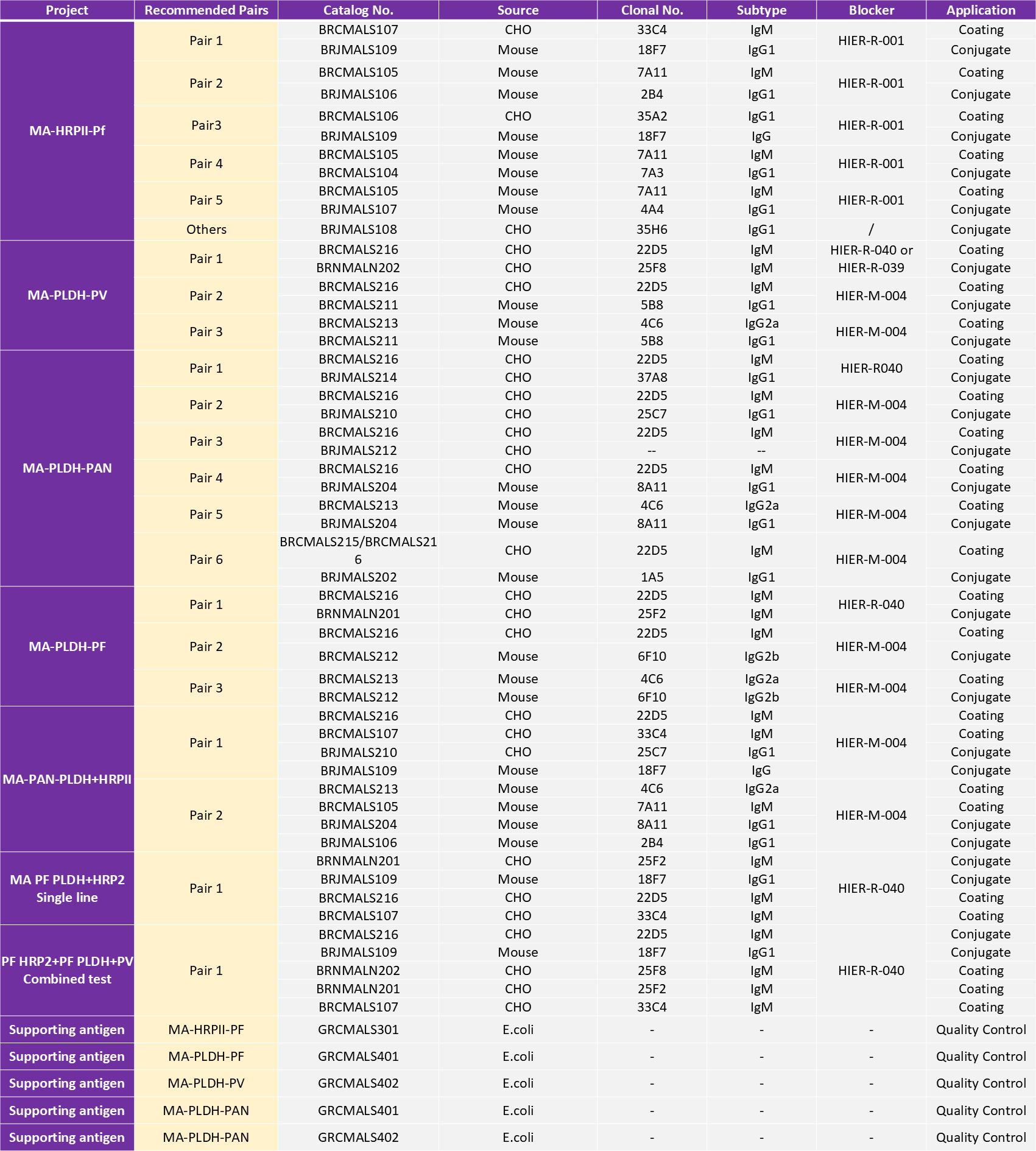Fapon's High-performance Pf-pLDH Raw Materials and Reagent Solutions for Malaria Diagnosis
April 25, 2025, is the 18th World Malaria Day. This year's WHO campaign theme is "Malaria ends with us: Reinvest, Reimagine, Reignite". The theme emphasizes the urgency of malaria control and calls for increased investment in malaria prevention, the promotion of technological innovation in prevention and control, and the strengthening of international cooperation in order to accelerate the process of ending malaria and contribute to global health and sustainable development.
Global Malaria Burden
According to the World Malaria Report 2024, the number of malaria cases was estimated at 263 million in 2023. This represents an increase of 11 million cases from 2022, while the number of deaths remained high at 597,000 cases. The WHO African region remains the hardest hit by malaria, with 94% of cases and 95% of deaths globally. Despite global funding for malaria control amounting to $4 billion in 2023, 75% of which is focused on the African region, no significant decline in malaria incidence has been observed.
Early diagnosis and treatment of malaria not only reduces illness and death, but is also effective in reducing transmission. WHO recommends parasite-based diagnostic tests for all suspected malaria cases to confirm infection and provide prompt treatment. Rapid diagnostic tests (RDTs) for malaria are able to detect different species of Plasmodium and are particularly suited for use in resource-limited areas. About 4.4 billion malaria RDTs were supplied by reagent manufacturers globally between 2010 and 2023. Demand for the tests is expected to continue to grow as the number of malaria cases increases in the future.
The Plasmodium falciparum hrp2/3 Gene Deletion Challenge
Malaria is a deadly infectious disease caused by Plasmodium falciparum. There are 5 Plasmodium parasite species that cause malaria in humans and 2 of these species – P. falciparum and P. vivax – pose the greatest threat. P. falciparum is the deadliest malaria parasite. Currently, the commonly detected target of malaria RDTs is Plasmodium falciparum histidine-rich protein 2 (HRP2). While HRP2-based RDTs generally have the highest sensitivity for detecting P. falciparum, parasite strains have recently been identified that have deletions in the genes encoding the HRP2 or similar HRP3 protein. Strains lacking both genes evade detection by HRP2-based RDTs, leading to false-negative results, making the test inaccurate, delaying treatment and affecting malaria prevention and control efforts.
Since the first report of pfhrp2/3 gene deletion in Peru in 2010, the mutant strain has spread to 55 countries worldwide, including in Africa, Asia and the Middle East. In countries such as Djibouti, Eritrea and Peru, Plasmodium falciparum with pfhrp2/3 gene deletion accounted for up to 80% of symptomatic patients, suggesting that these variants may dominate the population and pose a serious threat to malaria patients globally. Therefore, WHO suggests that an alternative test to the Plasmodium lactate dehydrogenase (pLDH)-based RDT could be used for suspected malaria cases with pfhrp2/3 gene deletions.

Estimated prevalence of pfhrp2 gene deletions (Source: World Malaria Report 2024)
pLDH (lactate dehydrogenase) is an essential enzyme for Plasmodium survival and is expressed in all Plasmodium species. However, the sensitivity of rapid assays for pLDH is usually low compared to HRP2/3, which can lead to false negative results. The development of highly sensitive pLDH RDTs is more important in the context of hrp2/3 gene deletion. To reliably diagnose P. falciparum with hrp2/3 gene deletion, lower detection limits are needed to improve the accuracy and reliability of the assay. PATH recommends that the lower detection limit for new competitive pLDH assays for P. intermedius and P. falciparum should be 5~10-fold higher than the previous one, with the aim of detecting pLDH at concentrations of less than 1 ng/mL.
Fapon Malaria Raw Materials and Reagent Solutions
Since 2001, Fapon has been focusing on the research core raw materials for infectious disease diagnostic reagents. Our malaria diagnostic materials are recognized by customers worldwide for their superior performance. We provide complete malaria testing solutions covering single and multiple tests, which help our customers to rapidly complete WHO-PQ certification.
To address the problem of missed detection of malaria caused by hrp2/3 gene deletion, our newly developed Pf-pLDH raw material realizes a technological breakthrough. The sensitivity of detection is 10-fold higher than that of the conventional solution, with a detection limit as low as 0.4 ng/mL, which can effectively cover the needs of testing in the endemic areas of the gene deletion.
Fapon Pf-PLDH Raw Material Product Characteristics
1. Higher Sensitivity
Internal control materials yielded favourable results with a detection limit of 0.4 ng/mL.
NIBSC reference material 16-376 samples showed positive results with a detection limit of 2 IU/mL.
CDC panel samples showed positive results with a detection limit of 20 parasites/μL.
2. Excellent Specificity
Our products do not cross react with Pv-PLDH and Pf-HRPⅡ.
3. Flexible Combination
Raw material verified by single and multiple tests, can be flexibly combined and used to meet different testing needs.
4. Fapon Malaria Diagnostic Reagent Solutions
In addition to improving the sensitivity of Pf LDH, NGO also suggests improving the diagnosis through changes in product forms. Currently, the most recommended product form is the mix of Pf LDH+HRP2 and the combination of this mixed form and LDH-PV.
Fapon not only provides relevant raw material recommendations for traditional product combinations, but also introduces raw material solutions for new product forms, helping customers quickly complete new product development.

Traditional combinations (left) and new combinations recommended by NGO (right)
Fapon Malaria Raw Materials

Fapon remains steadfast in its commitment to combat malaria by providing innovative and high-performance raw materials for diagnostic purposes. With our dedication to quality and adherence to global standards, we aim to play a significant role in the global effort to control and eventually eradicate malaria. Join us in the fight against this deadly disease, as together, we strive for a malaria-free world.
Internationally Leading Raw Material Standards
Fapon actively responds to the WHO's call, in order to improve the problem of missed detection due to hrp2 gene deletion, the latest upgrade of high-performance Pf-pLDH diagnostic raw materials, the performance of which is at the international leading level, and the sensitivity of the test is increased by 10 times compared with the conventional solution, which can effectively cover the testing needs of the endemic areas of hrp2 gene deletion.
Ensuring Stable Supply of Malaria Raw Materials
Fapon has always been committed to malaria prevention and treatment. Relying on our strong innovative R&D strength and large-scale production platform, we have successfully realized the local production of malaria raw materials and ensured a stable and reliable supply of malaria raw materials. We sincerely look forward to working with global organizations to enhance the supply of malaria diagnostic products, so that everyone can have equitable access to high-quality malaria diagnostic products and services, and provide a solid and powerful support for global malaria prevention and control work.
Continuous Product Iteration and Optimization
Fapon will always closely monitor the dynamic changes in the international malaria market, and continuously upgrade and optimize our products. We will continue to maintain a keen insight into the market demand. At the same time, we sincerely welcome more partners to join us in combating malaria—a global challenge—and together contribute to its elimination!






